The emperor that reformed Rome and ended a century of crisis
Constantine the Great was the ruler of the Roman Empire between 306 and 337 AD. His rule was a turning point in the Roman Empire. He introduced widespread economic and social reforms that helped end a century of crisis in the Roman world. He also most importantly allowed a religion which had been shunned by Roman society for decades come to light.

Constantine was declared emperor by his troops in 309 AD, in the British City of York (then Eboracum), after the death of his father, Constantius I. At this time, the Roman Empire was ruled by a number of emperors, working together. Constantine declared himself sole ruler of the empire and marched on Rome, to face his rival Maxentius in battle.
While marching on Rome an odd occurrence took place. According to sources Constantine and his soldiers witnessed a massive Christian symbol (the Chi-Rho) on the horizon. Subsequently, the night before he and his troops were to meet Maxentius in battle, Constantine had a dream. He was told the name of God, and that if his soldiers fought under the banner of Christ they would win the upcoming battle. The following morning Constantine, to the shock and horror of his generals and troops, ordered for the shields of his men to be painted with the Chi-Rho.
This strange and unprecedented move seems to have worked. Constantine was victorious at the battle of the Milvian Bridge, October 28th AD 312. He became the sole emperor of the Roman Empire and legalised Christianity across it, even converting to Christianity himself before his death and ushering in a lineage of Romano-Christian emperors that would last for a thousand years. Christianity became the dominant religion of the Roman world.
Constantine made sweeping military, social and economic reforms as well. He shifted the main seat of power from Rome to the newly named ‘Constantinople’ (modern day Istanbul), and introduced a new gold coin – the solidus, which would popular across the empire. Constantine’s gold coin was the ideal way to broadcast his new religious ways. This spectacular depiction of Constantine the Great was struck later in the emperor’s reign, around AD 326–330. It is not accompanied by any text, drawing the viewer directly to the impressive portrait. Constantine is depicted gazing upwards, towards God. The two wreaths which appear on this coin’s reverse refer to two decades of rule successfully completed – the Emperor’s vicennalia; something only a handful of emperors had achieved before him.
This extremely fine piece is not recorded in any of the major catalogues, being apparently unique. It bears the excellent pedigree of an old, famous collection. It is a truly magnificent piece of Late Roman gold.
OTHER ITEMS FROM THIS PERIOD…
-
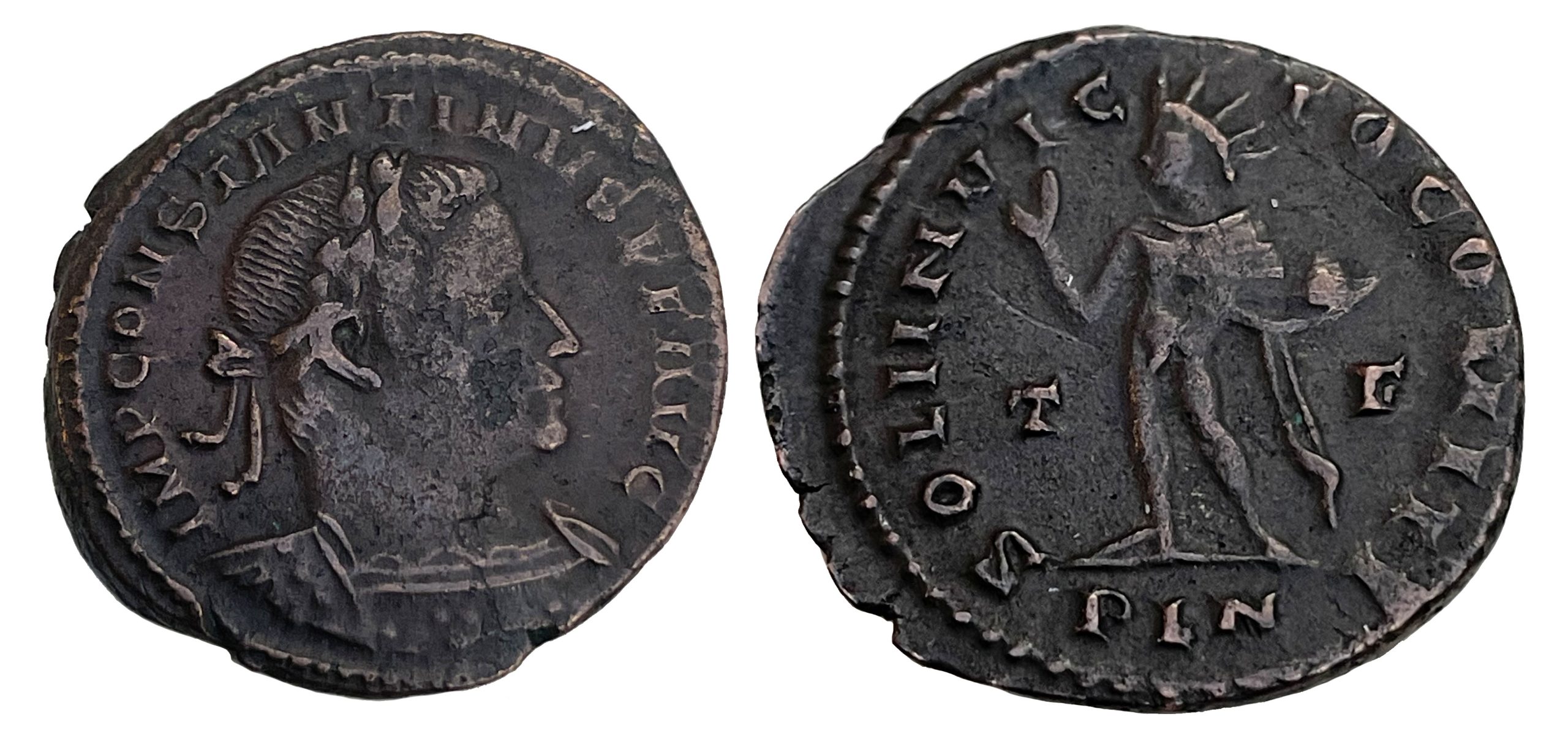 Constantine I (AD 306-337), London Mint Follis
Constantine I (AD 306-337), London Mint Follis -
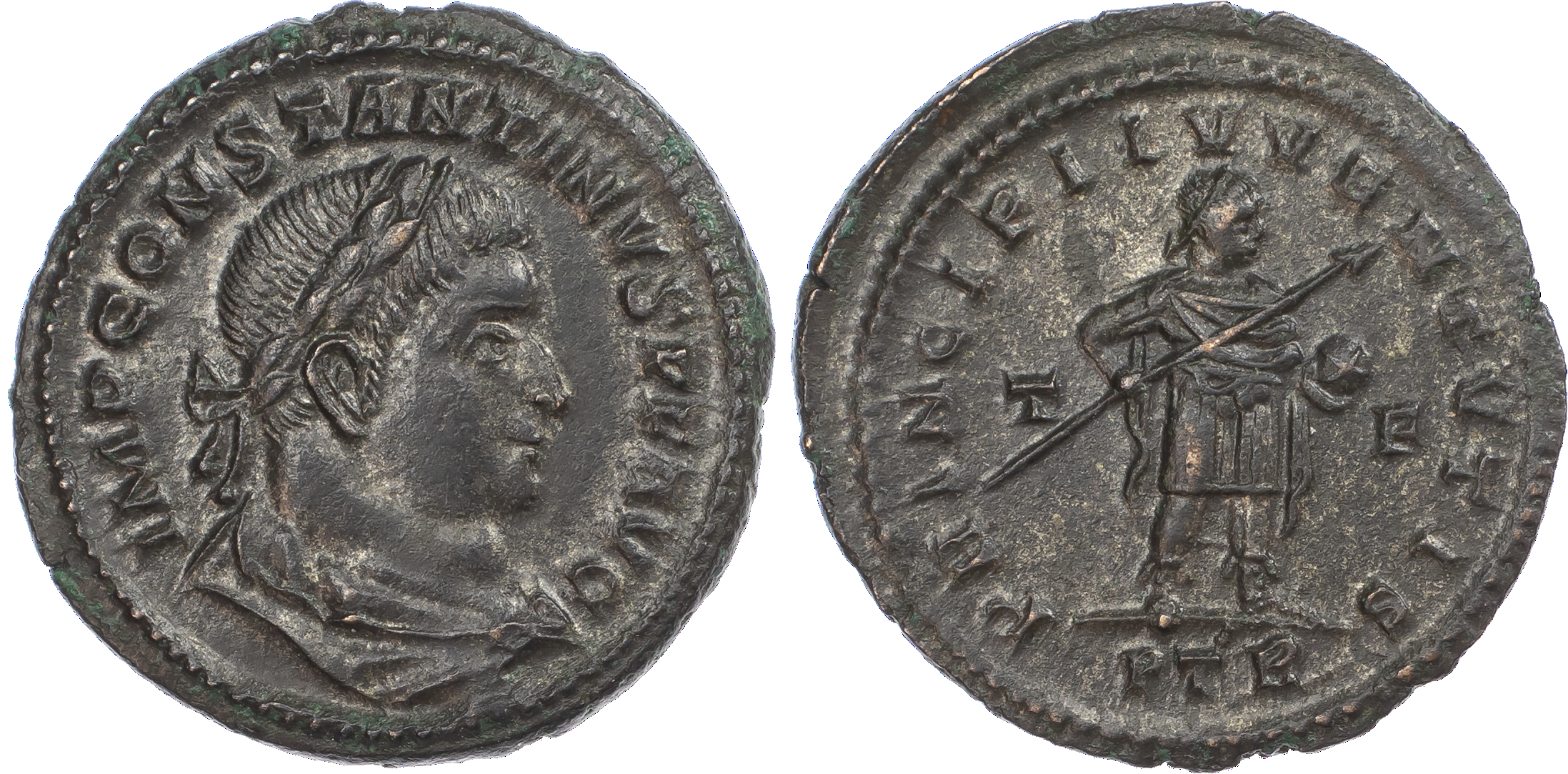 Constantine, Follis
Constantine, Follis -
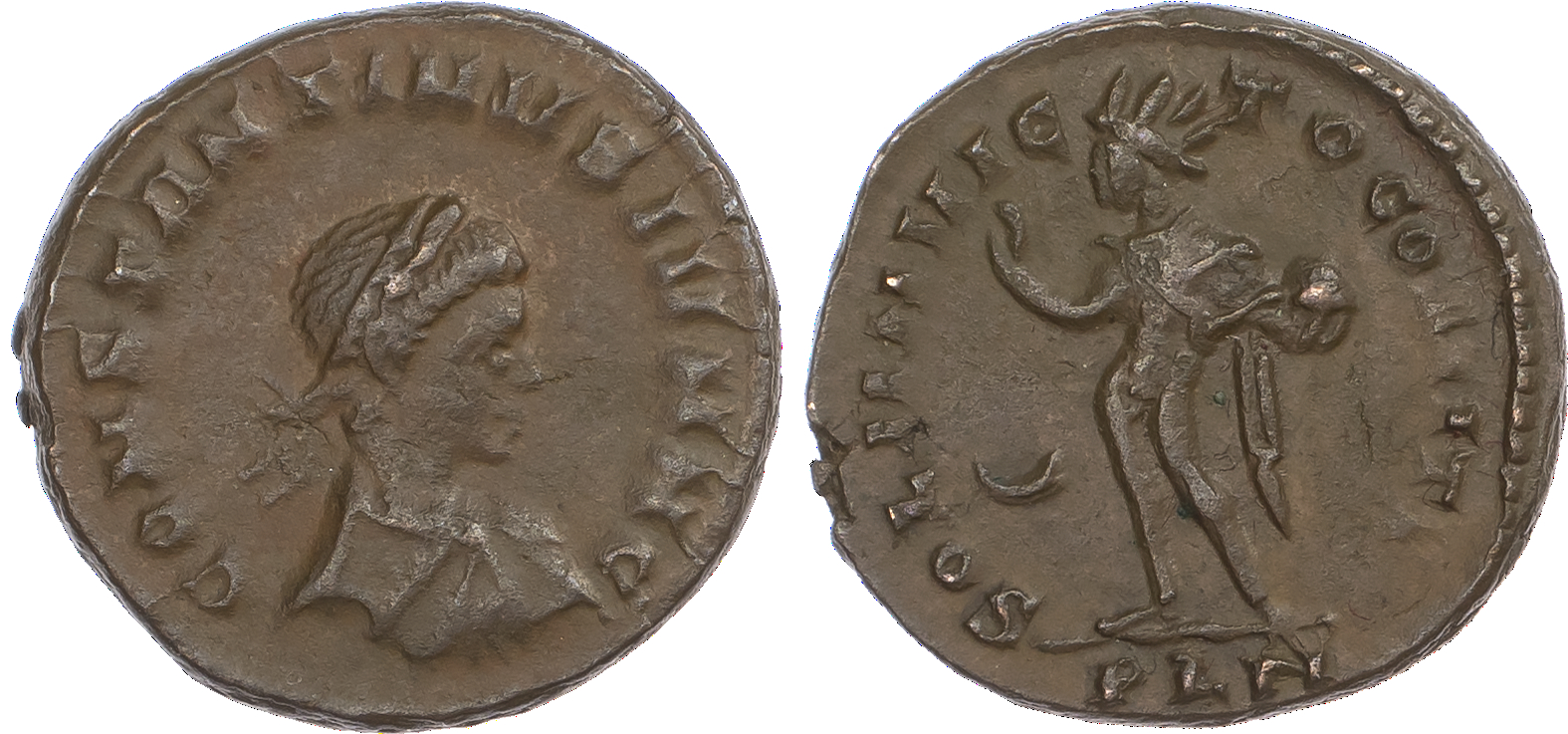 Constantine, London Mint Follis
Constantine, London Mint Follis -
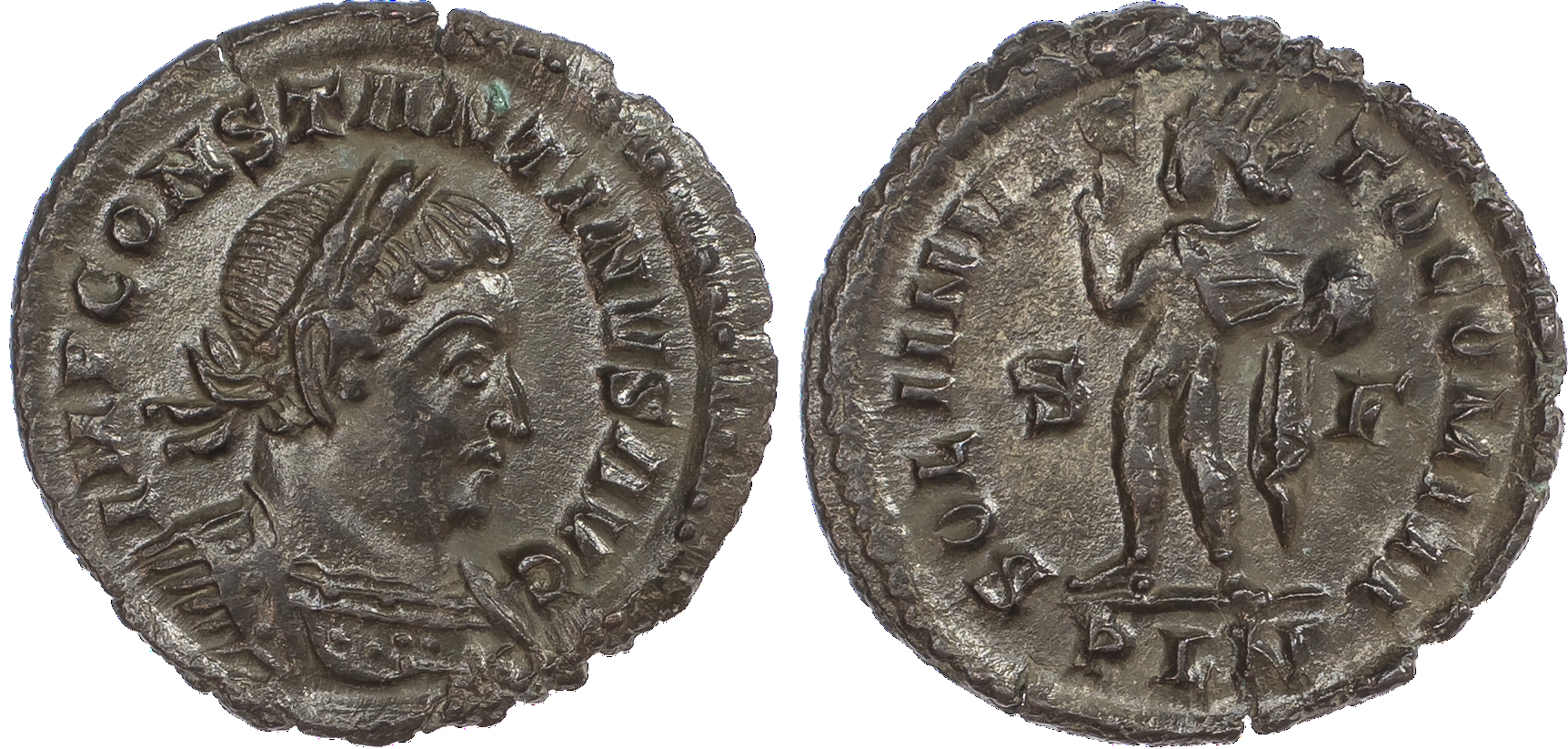 Constantine, London Mint Follis
Constantine, London Mint Follis -
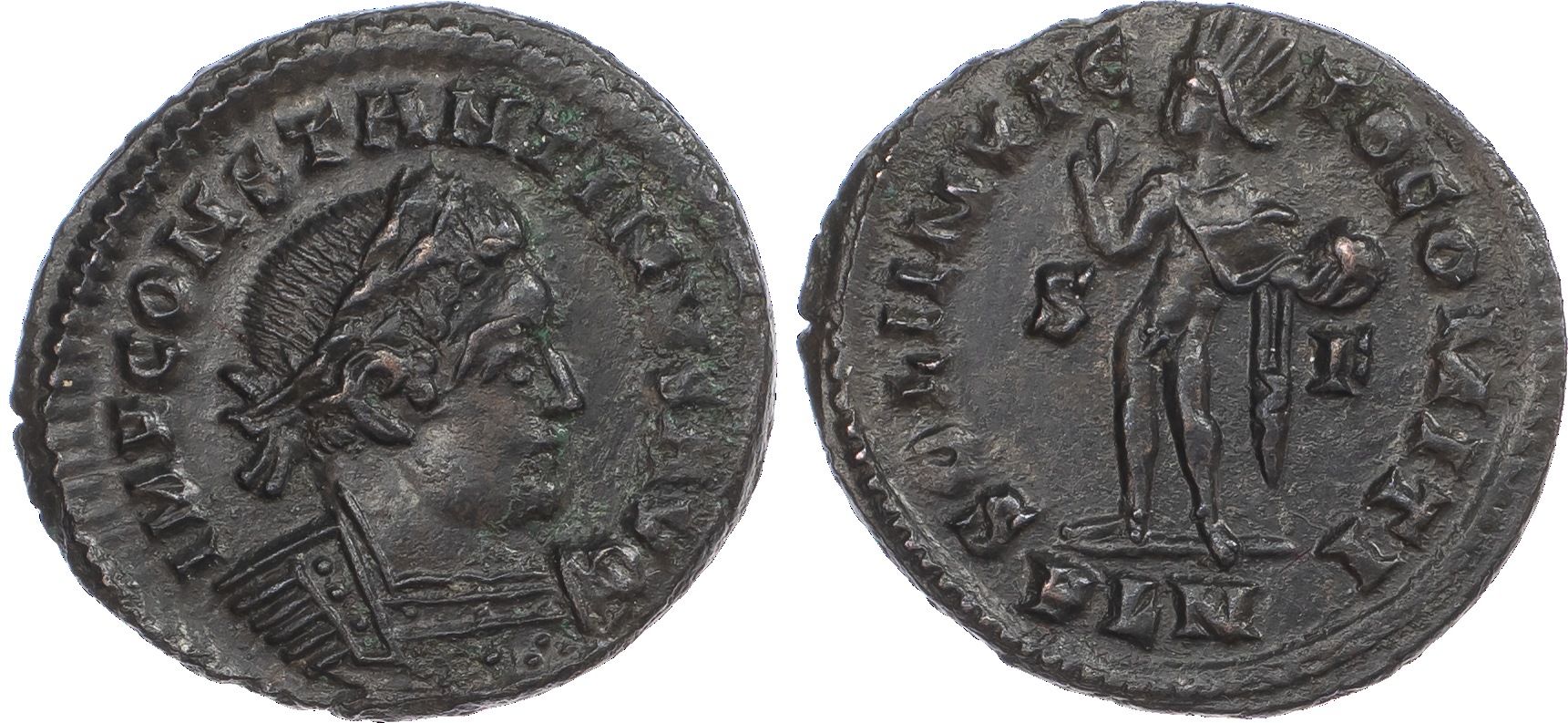 Constantine, London Mint Follis
Constantine, London Mint Follis -
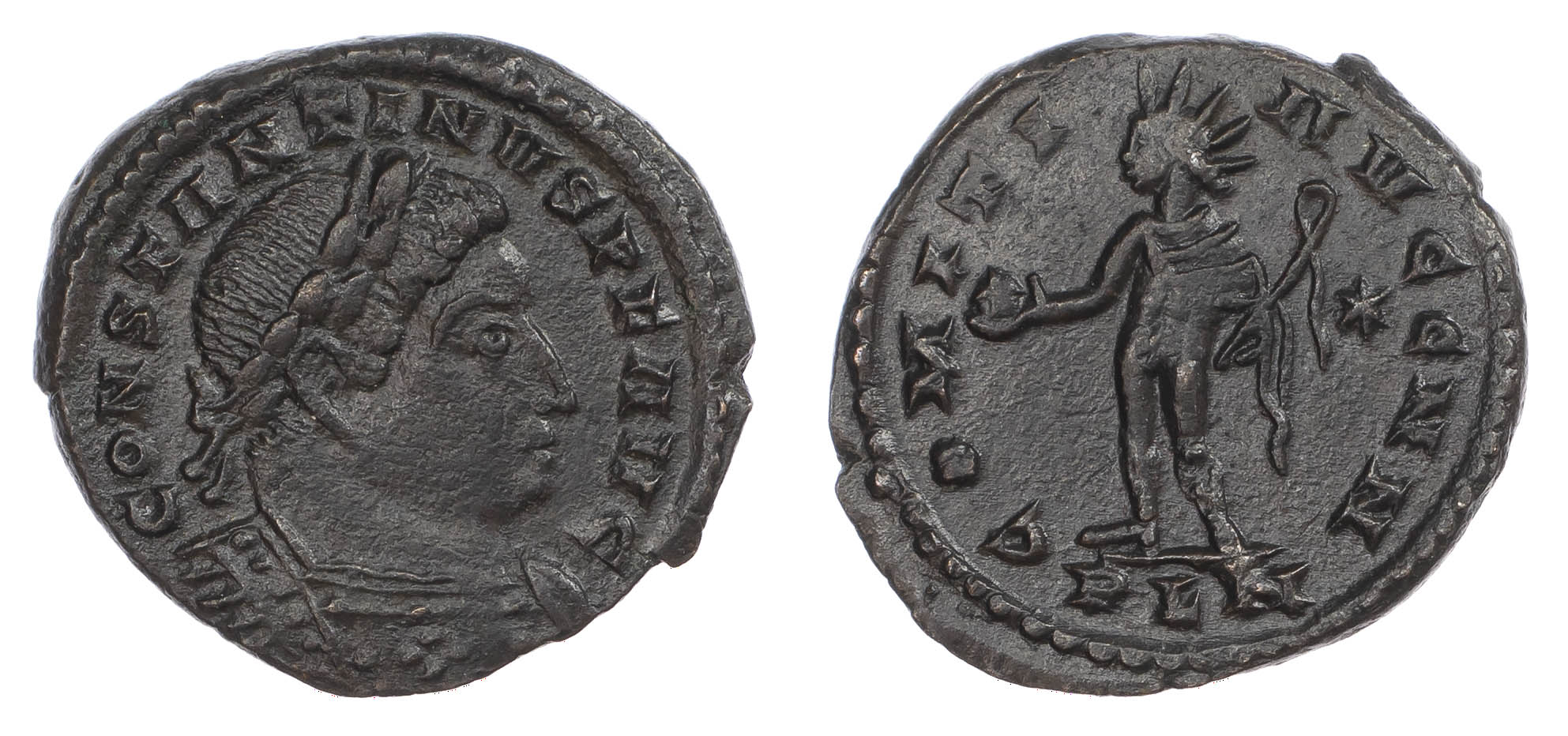 Constantine, London Mint Follis
Constantine, London Mint Follis -
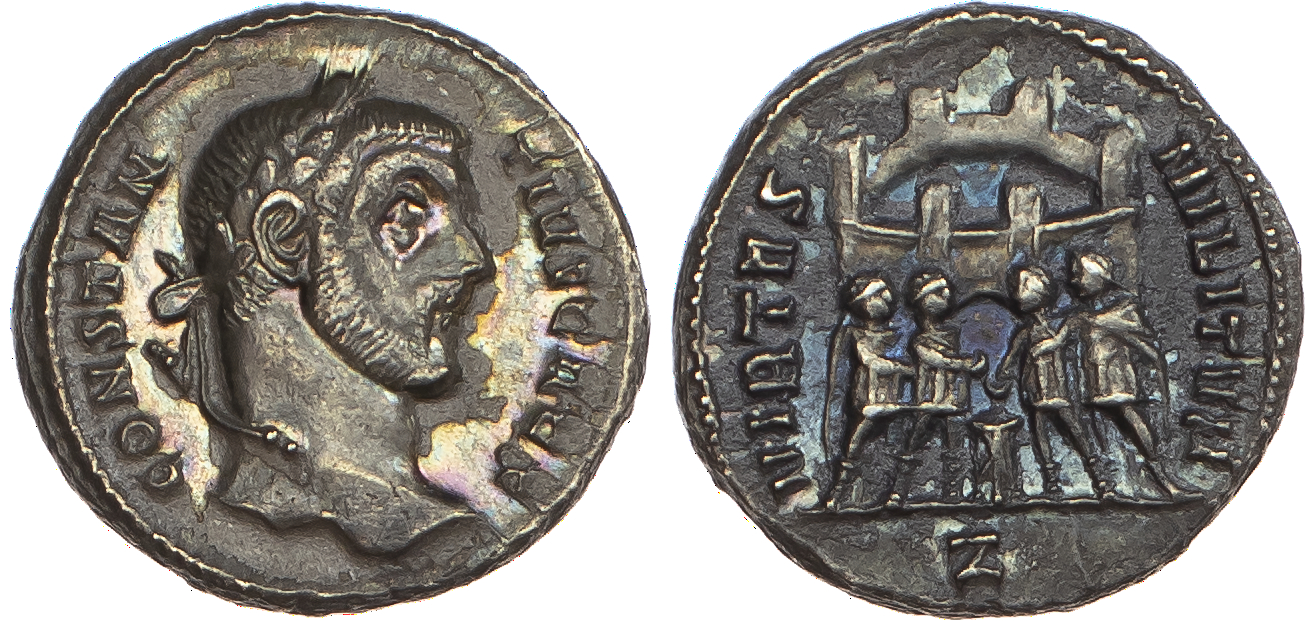 Constantius I, Silver Argenteus
Constantius I, Silver Argenteus -
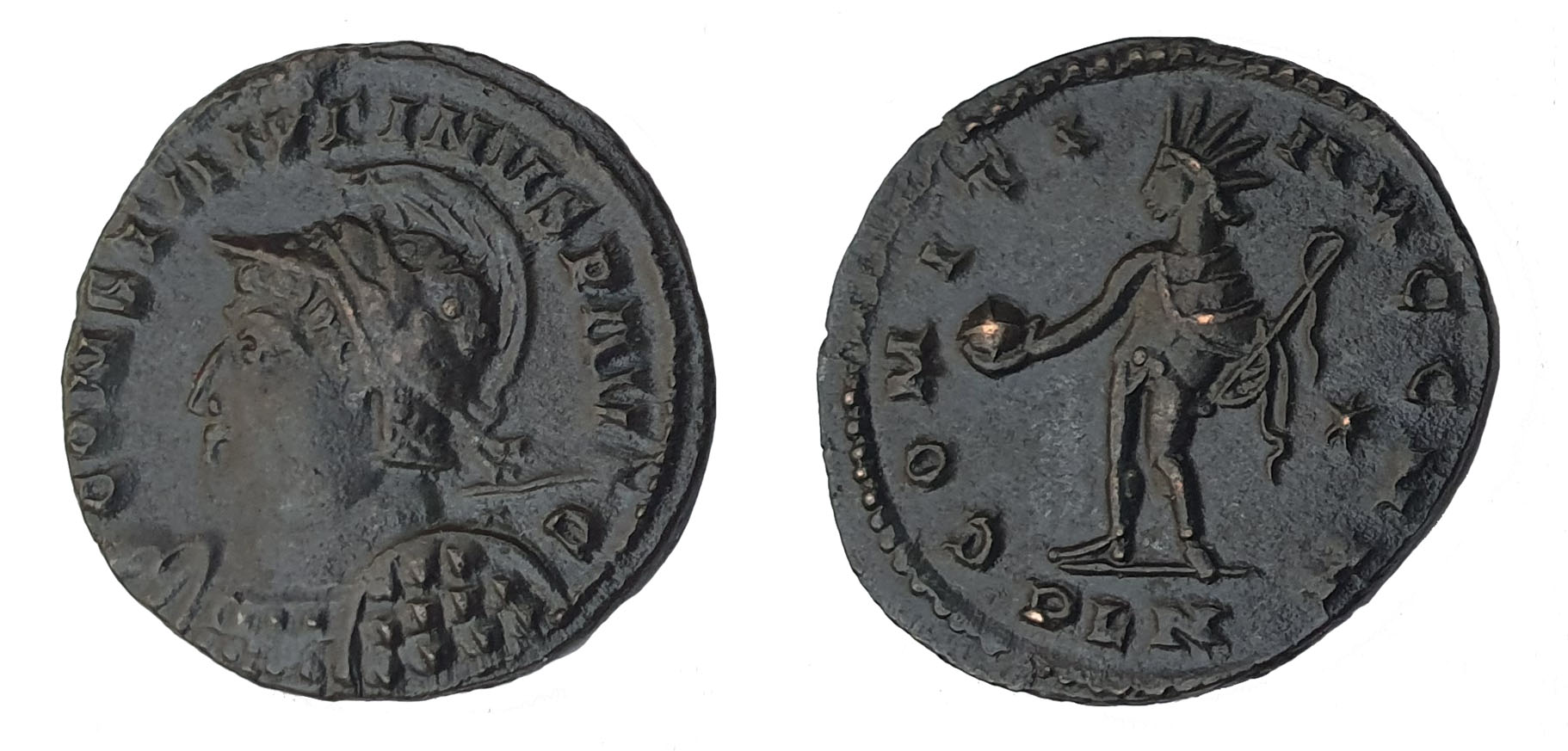 Constantine I, Bronze Follis
Constantine I, Bronze Follis -
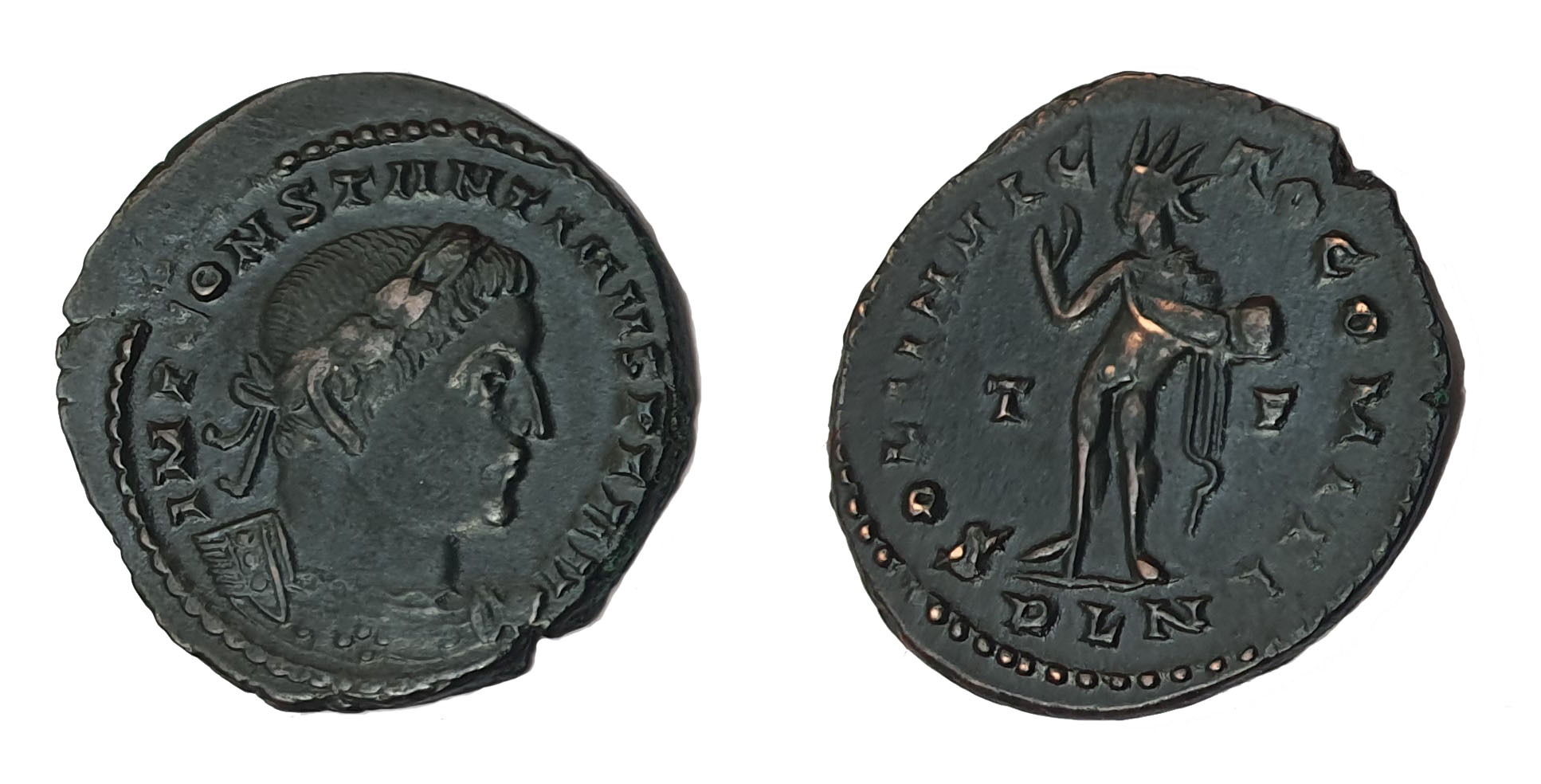 Constantine I, Bronze Follis
Constantine I, Bronze Follis -
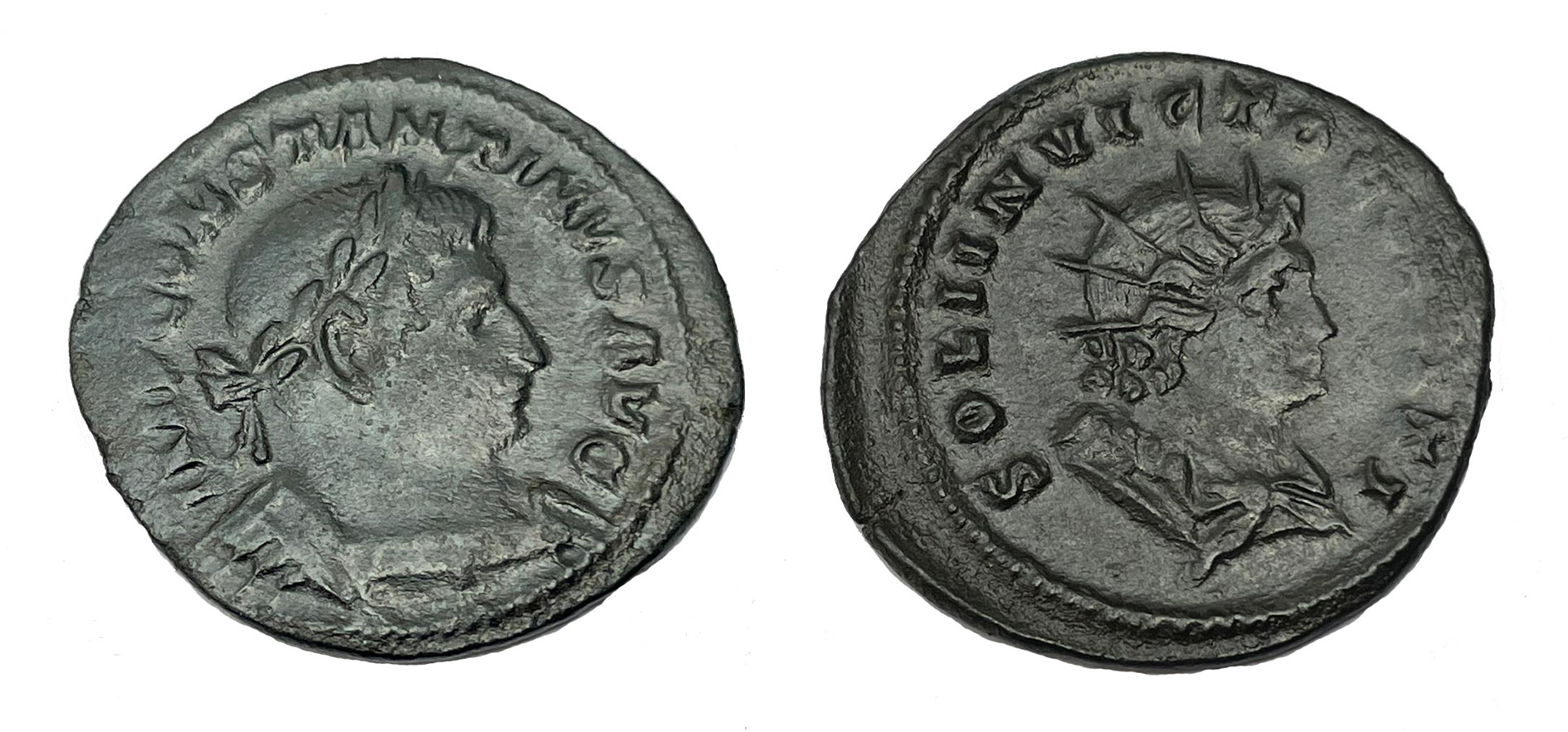 Constantine I, Bronze Follis
Constantine I, Bronze Follis -
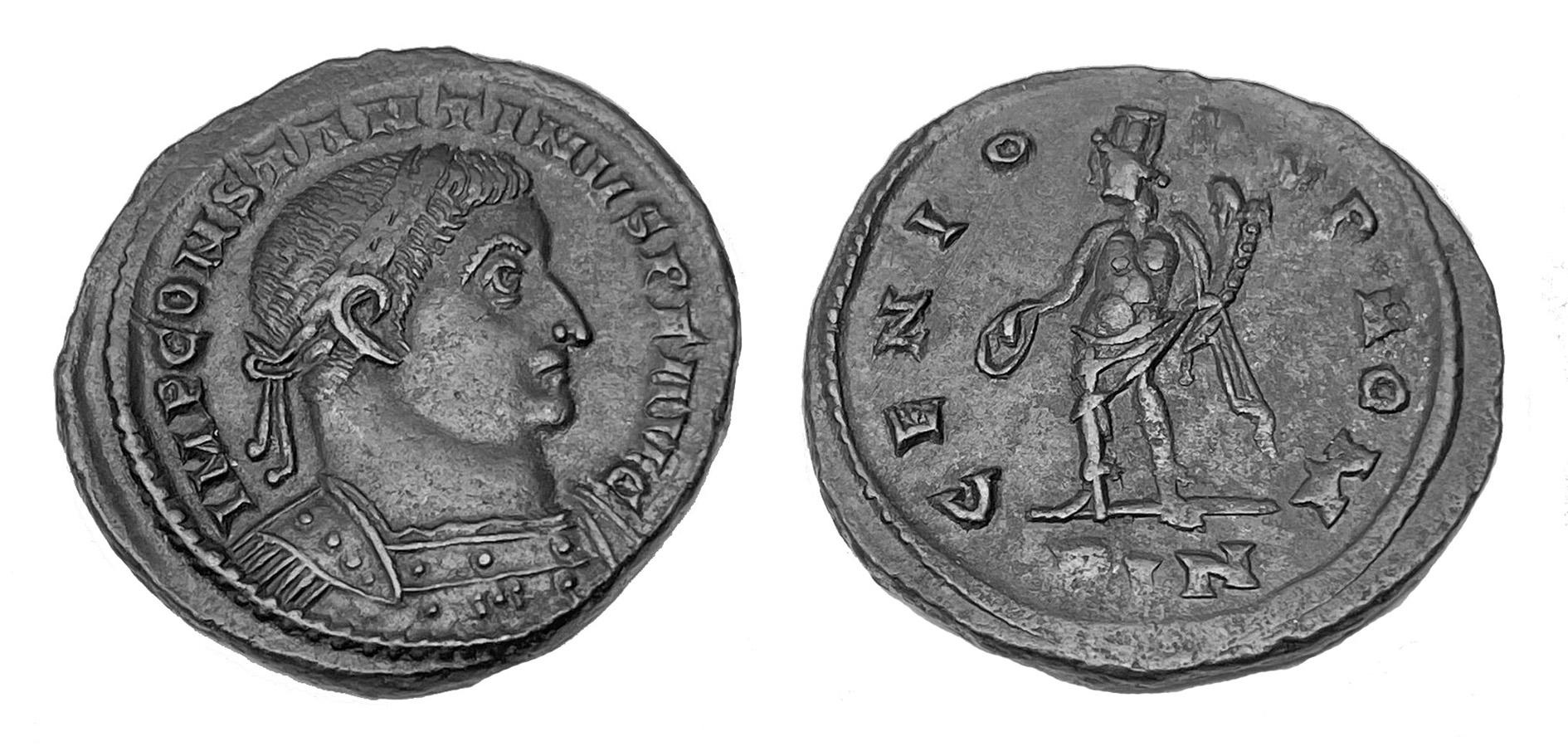 Constantine I, Bronze Follis
Constantine I, Bronze Follis -
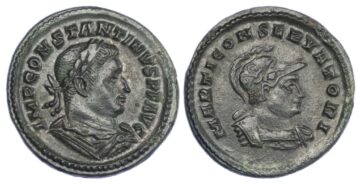 Constantine I, Billon Follis
Constantine I, Billon Follis
